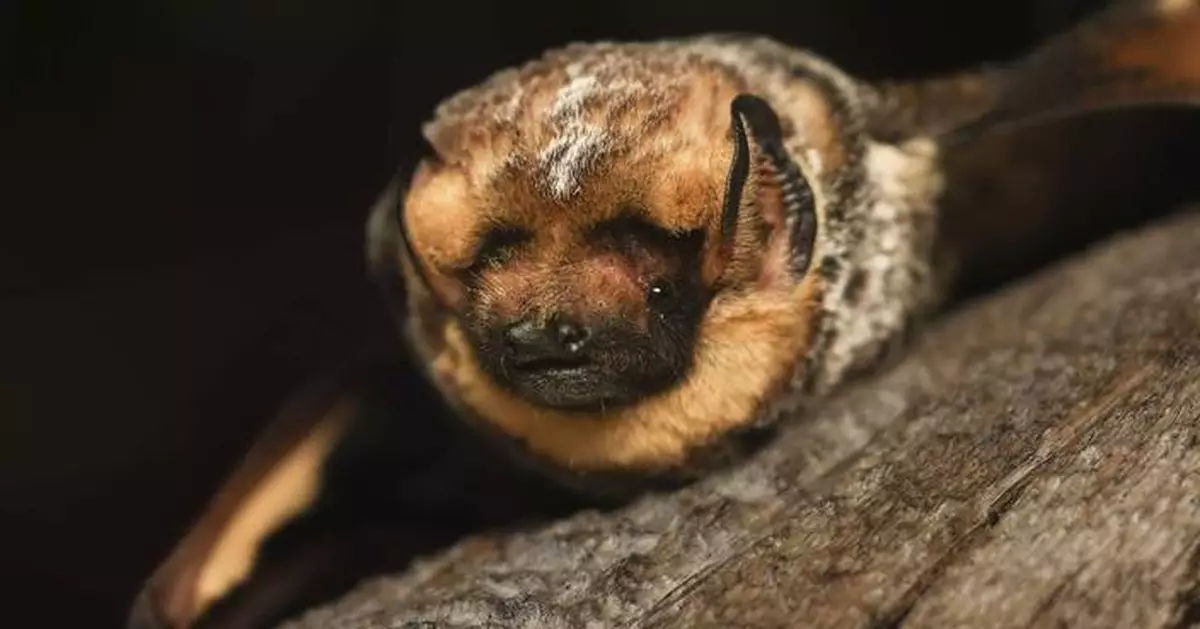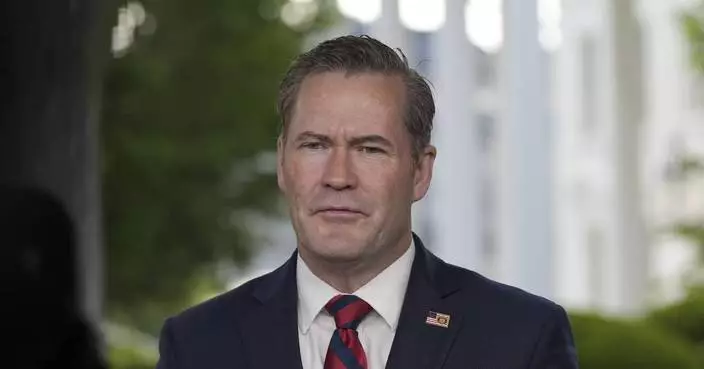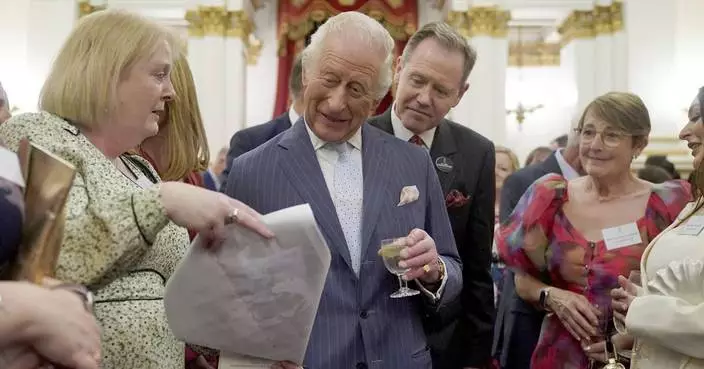PORTLAND, Ore. (AP) — Move over, Fat Bear Week. A bat beauty contest is now stepping up to the plate.
The Bureau of Land Management has hosted the online competition since 2019 to raise awareness about the animal’s ecological importance. The federal agency posts photos of bats on its Facebook and Instagram accounts, and then asks people to vote for the cutest one. The bats are part of wild populations living on public lands, and are photographed by agency staff.
The first round of voting began Thursday and pitted a Townsend's big-eared bat named “Sir Flaps-A-Lot” from Utah against a hoary bat fittingly named “Hoary Potter” from Oregon. The contest coincides with the start of Bat Week, during which bat experts across the country and the world hold educational events celebrating the only flying mammal.
The defining feature of a Townsend's big-eared bat is, unsurprisingly, its ears, which can reach a length of 1.5 inches (38 millimeters). The large ears funnel sound into the ear canal, provide lift during flight and help with temperature regulation, the Bureau of Land Management said in its Facebook post presenting the first two contestants.
Hoary bats, meanwhile, are known for swift flight and wrapping themselves in their own tails to mimic leaves and hide from predators, the agency said. Due to this attribute, it estimated Hoary Potter would be “the perfect candidate for seeker on this year's Quidditch team," referring to the game in Harry Potter that is played on flying brooms.
Neither species are federally listed as endangered. However, Oregon has included them on its list of species needing conservation attention, and Utah has done the same for the Townsend's big-eared bat.
Emma Busk, the BLM wildlife technician who photographed Hoary Potter, said bats around the world play a key role in the environment by eating insects and pollinating flowers and fruits. But they're increasingly facing the threats of habitat loss, disease and light pollution, and are often misunderstood as scary disease carriers, she said.
“There's a lot of fear and misconceptions around bats,” she said, noting that people often associate rabies with the animal. “But less than 1% of all bat populations actually carry rabies, and the bat-to-human disease transmission is actually really low.”
Busk is rooting for Hoary Potter in the hopes that an Oregon bat will win the beauty contest for a third time. Last year, “William ShakespEAR,” a female Townsend's big-eared bat from southern Oregon whom Busk also photographed, claimed the crown. And in 2022, a canyon bat named "Barbara" similarly hailing from southern Oregon was declared the winner.
“Our effort every year is to just collect as much data as we can on the species in our resource area, so that we do know how to better protect them moving forward,” Busk said.
The beauty contest will continue in rounds over the next week. It's timed to wrap up on Halloween next Thursday, when the winner will be announced.
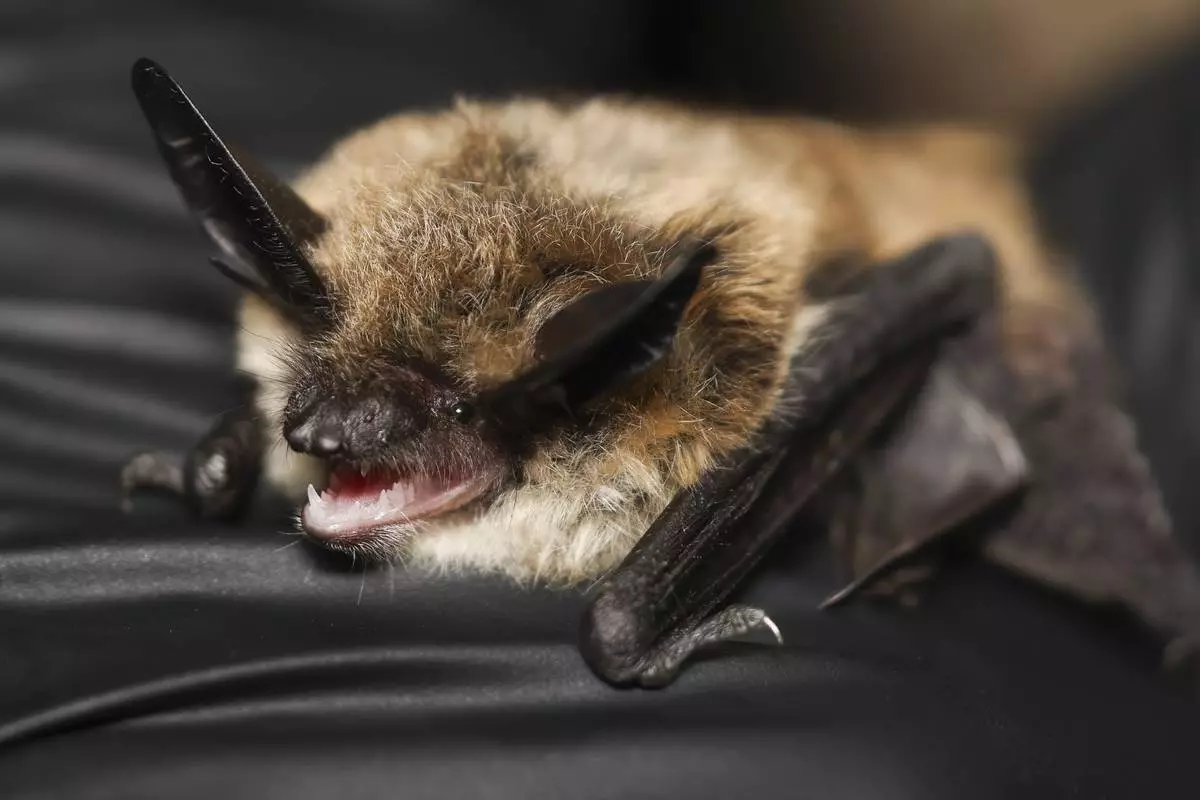
This undated image provided by the Bureau of Land Management shows the bat Honey Bunches of Myotis. (Emma Busk/Bureau of Land Management via AP)

This undated image provided by the Bureau of Land Management shows the bat Hoary Potter. (Emma Busk/Bureau of Land Management via AP)
President Donald Trump’s administration released a lengthy review of transgender health care on Thursday that advocates for a greater reliance on behavioral therapy rather than broad gender-affirming medical care for youths with gender dysphoria.
The 409-page Health and Human Services report questions standards for the treatment of transgender youth issued by the World Professional Association for Transgender Health and is likely to be used to bolster the government’s abrupt shift in how to care for a subset of the population that has become a political lightning rod.
Major medical groups and those who treat transgender young people sharply criticized the new report as inaccurate.
This “best practices” report is in response to an executive order Trump issued days into his second term that says the federal government must not support gender transitions for anyone under age 19.
“Our duty is to protect our nation’s children — not expose them to unproven and irreversible medical interventions,” National Institutes of Health Director Dr. Jay Bhattacharya said in a statement. “We must follow the gold standard of science, not activist agendas.”
The report questions the ethics of medical interventions for transgender young people, suggesting that adolescents are too young to give consent to life-changing treatments that could result in future infertility. It also cites and echoes a report in England that reinforced a decision by its public health services to stop prescribing puberty blockers outside of research settings.
The report accuses transgender care specialists of disregarding psychotherapy that might challenge preconceptions, partly because of a “mischaracterization of such approaches as ‘conversion therapy,’” which about half the states have banned for minors.
The American Academy of Child & Adolescent Psychiatry has said evidence shows conversion therapies inflict harm on young people, including elevated rates of suicidal thoughts.
HHS said its report does not address treatment for adults, is not clinical guidance and does not make any policy recommendations. However, it also says the review “is intended for policymakers, clinicians, therapists, medical organizations, and importantly, patients and their families,” and it declares that medical professionals involved in transgender care have failed their young patients.
The report could create fear for families seeking care and for medical providers, said Shannon Minter, the legal director at the National Center for Lesbian Rights. “It’s very chilling to see the federal government injecting politics and ideology into medical science,” Minter said.
“It’s Orwellian. It is designed to confuse and disorient,” Minter added.
Child and adolescent psychiatrist Dr. Scott Leibowitz, a co-author of the influential WPATH standards for youth, said the new report “legitimizes the harmful idea that providers should approach young people with the notion that alignment between sex and gender is preferred, instead of approaching the treatment frame in a neutral manner.”
While Health Secretary Robert F. Kennedy Jr. has repeatedly pledged to practice “radical transparency,” his department did not release any information about who authored the study. The administration says the new report will go through a peer-review process and will only say who contributed to the report after “in order to help maintain the integrity of this process.”
The report contradicts American Medical Association guidance, which urges states not to ban gender-affirming care for minors, saying that “empirical evidence has demonstrated that trans and non-binary gender identities are normal variations of human identity and expression.”
It also was prepared without input from the American Academy of Pediatrics, according to its president, Dr. Susan Kressly.
“This report misrepresents the current medical consensus and fails to reflect the realities of pediatric care,” Kressly said. She said the AAP was not consulted “yet our policy and intentions behind our recommendations were cited throughout in inaccurate and misleading ways.”
Dr. Jack Drescher, a New York psychiatrist and psychoanalyst who works on sexual orientation and gender identity issues, said the report is one-sided and “magnifies the risks of treatments while minimizing benefits.”
The Trump administration’s report says “many” U.S. adolescents who are transgender or are questioning their gender identity have received surgeries or medications. In fact, such treatments remain rare as a portion of the population. Fewer than 1 in 1,000 adolescents in the U.S. received gender-affirming medication — puberty blockers or hormones — according to a five-year study of those on commercial insurance released this year. About 1,200 patients underwent gender-affirming surgeries in one recent year, according to another study.
Gender-affirming care for transgender youth under standards widely used in the U.S. includes developing a plan with medical experts and family members that includes supportive talk therapy and can — but does not always — involve puberty blockers or hormone treatment. Many U.S. adolescents with gender dysphoria may decide not to proceed with medications or surgeries.
Jamie Bruesehoff, a New Jersey mom, said her 18-year-old daughter, who was assigned male at birth, identified with girls as soon as she could talk. She began using a female name and pronouns at 8 and received puberty blockers at 11 before eventually beginning estrogen therapy.
“She is thriving by every definition of the word,” said Bruesehoff, who wrote a book on parenting gender-diverse children. “All of that is because she had access to this support from her family and community and access to evidence-based gender-affirming health care when it was appropriate.”
A judge has blocked key parts of Trump’s order, which includes denying research and educational grants for medical schools, hospitals and other institutions that provide gender-affirming care to people 18 or younger. Several hospitals around the country ceased providing care. The White House said Monday that since Trump took office, HHS has eliminated 215 grants totaling $477 million for research or education on gender-affirming treatment.
Most Republican-controlled states have also adopted bans or restrictions on gender-affirming care. A U.S. Supreme Court ruling is pending after justices heard arguments in December in a case about whether states can enforce such laws.
The Jan. 28 executive order is among several administration policies aimed at denying the existence of transgender people. Trump also has ordered the government to identify people as either male or female rather than accept a concept of gender in which people fall along a spectrum, remove transgender service members from the military, and bar transgender women and girls from sports competitions that align with their gender. This month, HHS issued guidance to protect whistleblowers who report doctors or hospitals providing gender-affirming care. Judges are blocking enforcement of several of the policies.
This latest HHS report, which Trump called for while campaigning last year, represents a reversal in federal policy. The U.S. Substance Abuse and Mental Health Services Administration, which is part of HHS, found that no research had determined that behavioral health interventions could change someone’s gender identity or sexual orientation. The 2023 update to the 2015 finding is no longer on the agency’s website.
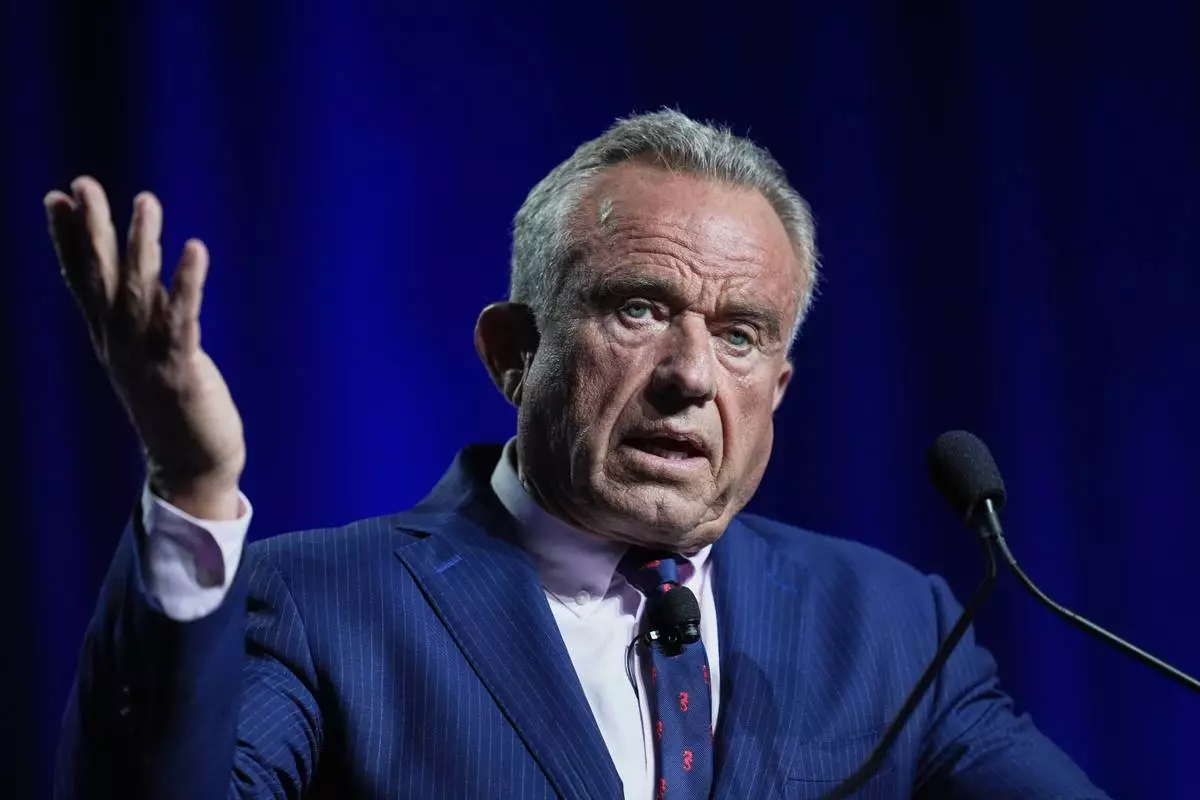
FILE - Health and Human Services Secretary Robert F. Kennedy Jr. speaks at the Rx and Illicit drug Summit, April 24, 2025, in Nashville, Tenn. (AP Photo/George Walker IV, File)
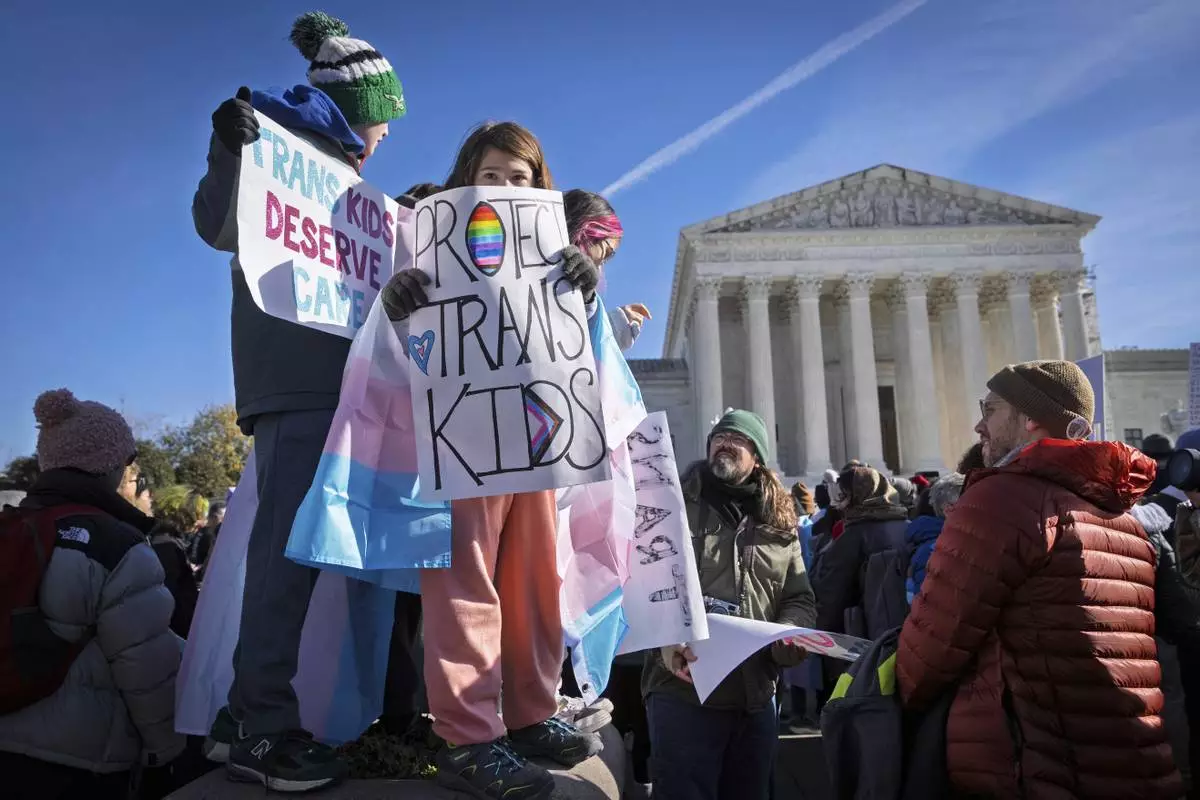
FILE - Children hold signs and transgender pride flags as supporters of transgender rights rally by the Supreme Court, Dec. 4, 2024, in Washington. (AP Photo/Jacquelyn Martin, File)
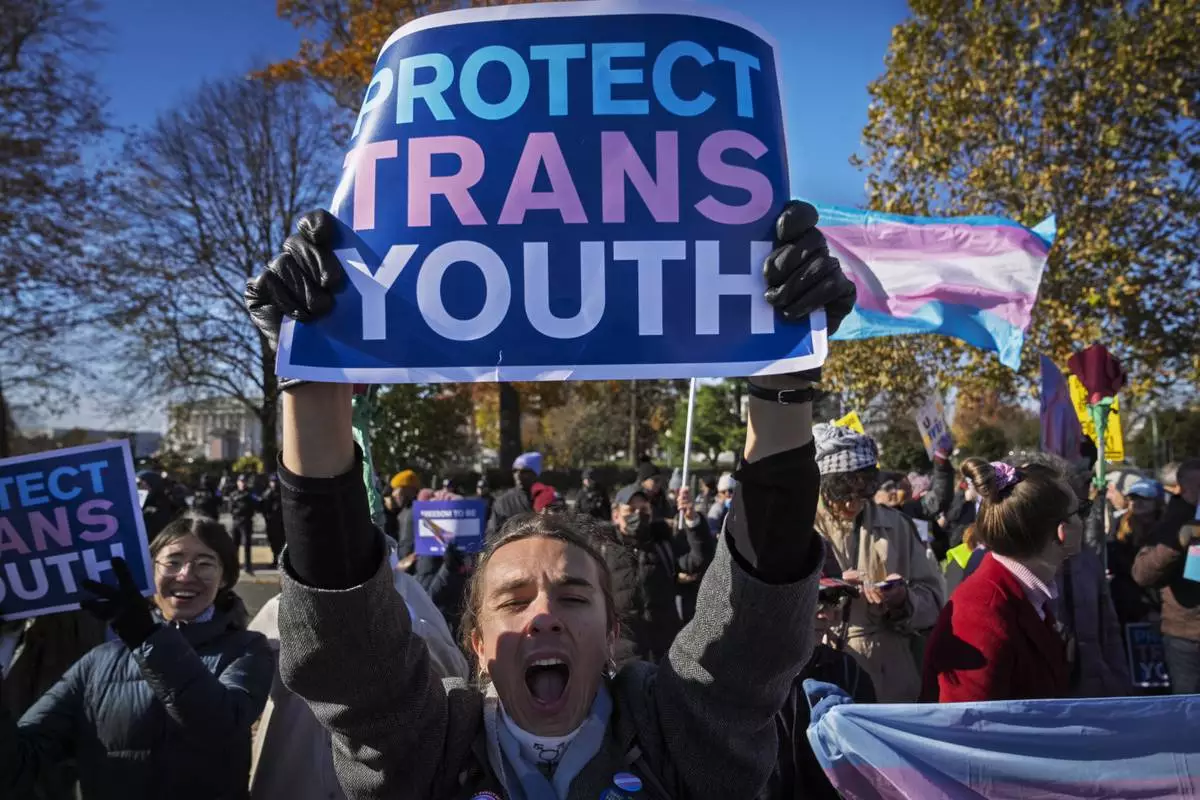
File - Supporters of transgender rights rally by the Supreme Court, Dec. 4, 2024, in Washington. (AP Photo/Jacquelyn Martin, File)

FILE - President Donald Trump holds up an executive order after signing it at an indoor Presidential Inauguration parade event in Washington, Jan. 20, 2025. (AP Photo/Matt Rourke, File)




